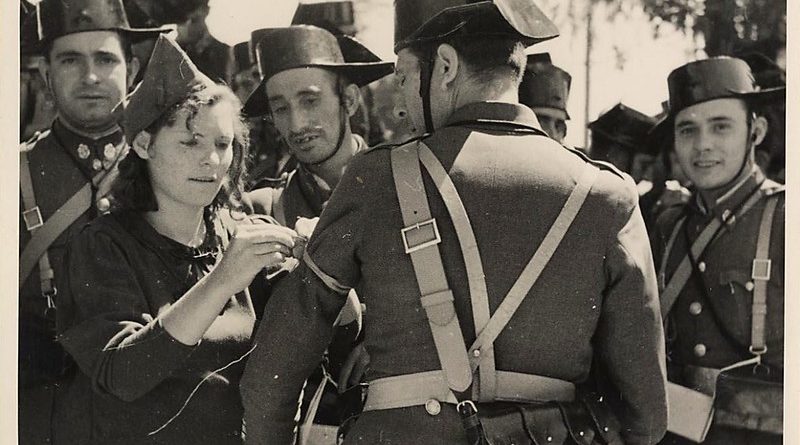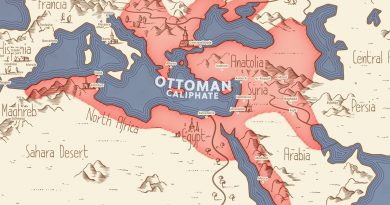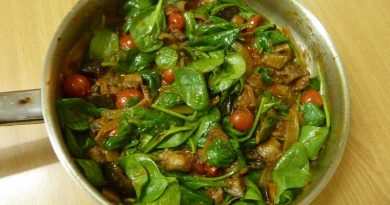The Spanish Civil War: Gone but Not Forgotten
The Spanish Civil War was fought from 1936 to 1939 between the Republicans and the Nationalists.
Republicans were loyal to the left-leaning Popular Front government of the Second Spanish Republic and included socialists, anarchists, communists and separatists.The opposing Nationalists who established the Spanish State were an alliance of fascist Falangists, monarchists, conservatives, and traditionalists supported by Nazi Germany and Fascist Italy and led by a military junta among whom General Francisco Franco quickly achieved a preponderant role.
Due to the international political climate at the time, the war was variously viewed as class struggle, a religious struggle, or a struggle between dictatorship and republican democracy, between revolution and counterrevolution, or between fascism and communism.
The Nationalists won the war, which ended in early 1939, and ruled Spain until Franco’s death in November 1975.
The war became notable for the passion and political division it inspired worldwide and for the many atrocities that occurred. Organised purges occurred in territory captured by Franco’s forces so they could consolidate their future regime. Mass executions also took place in areas controlled by the Republicans, with the participation of local authorities varying from location to location.
Estimates of casualties vary, but it is generally believed that about 500,000 soldiers died during the conflict, with the Nationalists suffering around 200,000 casualties and the Republicans around 300,000.Civilian casualties are estimated to be between 200,000 and 300,000. This includes deaths from bombings, executions, and reprisals against suspected political opponents.Overall, the total casualties, including both military and civilian deaths, are often estimated to be around 600,000 to 1,000,000 people, making the Spanish Civil War one of the deadliest conflicts in modern European history.
The Spanish Civil War served as a precursor to World War II, illustrating the ideological battle between fascism and democracy. It attracted international volunteers and support, becoming a symbol of the fight against totalitarianism.
*Causes
The Spanish Civil War was the result of a complex interplay of social, political, and economic factors that had developed over decades.
Spain experienced significant political turmoil in the years leading up to the war. The monarchy was challenged by various political movements, leading to the establishment of the Second Spanish Republic in 1931. The Republic faced opposition from conservative factions, military elements, and monarchists, contributing to widespread instability.
There were stark social divisions in Spain, with a significant gap between the wealthy elite and the poor working class. Rural areas, particularly, suffered from poverty and exploitation, leading to social unrest and demands for agrarian reform.
Spain is home to various distinct regions with strong identities, such as Catalonia and the Basque Country. These regions sought greater autonomy, which clashed with the central government’s efforts to maintain control, exacerbating tensions.
The 1930s also saw the rise of extremist political movements, including communism, anarchism, and fascism. The left, including socialists and communists, gained power and influence, leading to fears among conservatives and the military that a communist revolution was imminent.
The global economic downturn of the late 1920s and early 1930s severely impacted Spain, leading to high unemployment and social discontent. Economic hardship fueled radical political movements and increased social unrest.
The Republic attempted various reforms, including land redistribution and secularization, but faced fierce opposition from conservative forces, the Catholic Church, and landowners. The failure to enact effective reforms contributed to disillusionment with the government.
A faction within the military, disillusioned with the Republican government and fearing the rise of leftist ideologies, began to organize against it. This culminated in a coup attempt in July 1936, led by General Franco and other military leaders, which ignited the civil war.
The Spanish Civil War attracted international attention and intervention. Fascist Italy and Nazi Germany supported Franco’s Nationalists, while the Soviet Union and international brigades offered support to the Republicans. This international dimension influenced the dynamics of the conflict.
These causes combined to create a volatile environment that ultimately erupted into civil war, deeply affecting Spain’s history and society for decades to come.
* Legacy of the War
The war entrenched deep political divisions in Spanish society that persisted for decades. These divisions continue to resonate in contemporary
Following his victory, Franco established a dictatorship that suppressed dissent, implemented censorship, and persecuted political opponents, leaving a lasting impact on Spanish governance and civil rights.
The war significantly influenced Spanish literature, art, and cinema. Writers like George Orwell and Ernest Hemingway documented the conflict, while artists such as Pablo Picasso reflected its horrors in their work, most famously in Picasso’s “Guernica.”
Many intellectuals, artists, and political figures fled Spain during and after the war, contributing to a Spanish diaspora. This exile enriched cultural and intellectual life in other countries, particularly in France and Latin America.About 500,000 Spaniards are thought to have left during the war .
The legacy of the war has prompted ongoing debates about memory and historical reconciliation in Spain. The “pact of forgetting” after Franco’s death aimed to move past the war, but issues related to memorialization, historical memory, and the treatment of victims’ families have led to renewed discussions and conflicts.
The ongoing discussions about its legacy continue to influence contemporary Spanish identity and politics.
Destination: Spain




